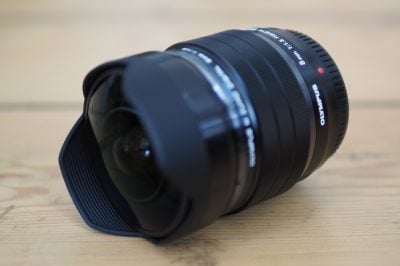Olympus 8mm f1.8 Fisheye review
-
-
Written by Gordon Laing
In depth
The Olympus M Zuiko Digital 8mm f1.8 Pro is a Fisheye lens for the Micro Four Thirds format. Officially announced in May 2015, the 8mm becomes the World’s brightest Fisheye lens and delivers a 180 degree field-of-view across the diagonal when mounted on an Olympus or Panasonic mirrorless body.
One of the best aspects of the Micro Fours Thirds catalogue is the sheer choice of lenses available, not just from Olympus and Panasonic, but also third parties. The M Zuiko Digital 8mm f1.8 becomes the third Fisheye for the format, following Panasonic’s Lumix G 8mm f3.5 and Samyang’s 7.5mm f3.5, the latter a lens I own and will compare against the new Olympus in this review. Most obviously the specification the Olympus enjoys over the other two models here is a focal ratio that’s two stops brighter, allowing you to maintain higher shutter speeds or lower ISO sensitivities in the same light conditions, while also opening up shallower depth of field effects.
In my review I’ll take a close look at all aspects of the Olympus 8mm Fisheye performance, including sharpness, depth of field, potential for starburst effects and much more. I’ll also be comparing it against my own Samyang 7.5mm Fisheye, as while it’s optically slower and manual focus only, it’s smaller, lighter and comes in at a third of the price. Find out which will be the best Fisheye lens for you!
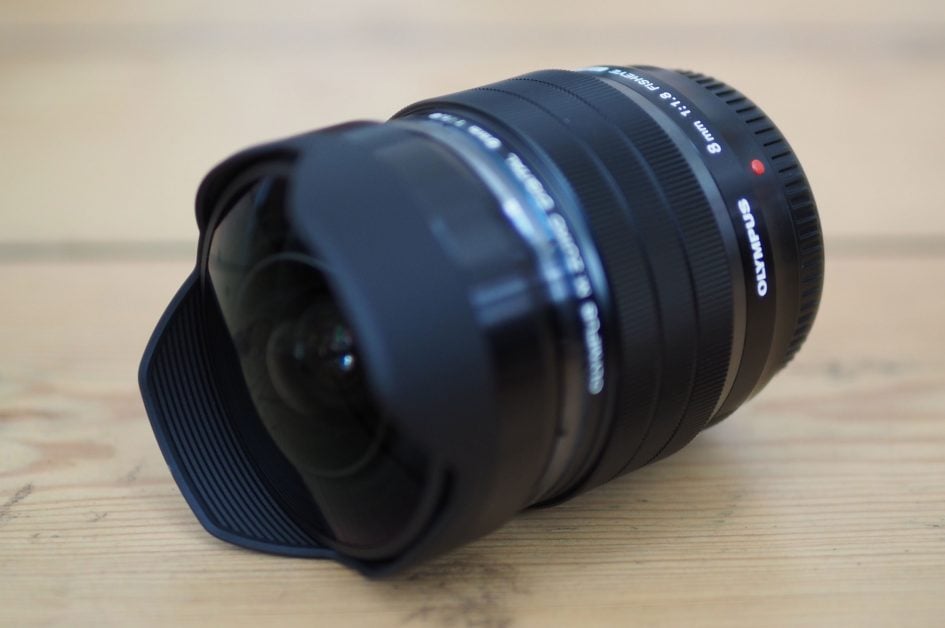
Olympus 8mm f1.8 Fisheye design and build quality
The Olympus 8mm f1.8 Fisheye is the fourth member of the Pro line-up (and the first prime) and shares a number of build and design cues in common with the three zooms. The black body, familiar grooves on the focusing ring, solid weather-proof construction, and signature blue ring near the end of the barrel all give it a family resemblance.
But it’s also the first Pro lens not to sport a customizable function button on the barrel, and the focusing ring doesn’t pull-back to reveal distance markings or enable manual focusing. Olympus tells me the focusing ring doesn’t pull back as there’s only fine focusing differences between the closest distance and infinity, although the absence of a function button is more mysterious as the barrel is certainly big enough to accommodate one, at least with a slightly narrower focusing ring.
Speaking of the barrel, the Olympus 8mm f1.8 Fisheye measures 62mm in diameter, 80mm in length and weighs 315g. I’ve pictured it below alongside the noticeably shorter Samyang 7.5mm f3.5, which may be roughly the same diameter at 60mm, but is little over half the length at 48mm, and over a third lighter too. Meanwhile Panasonic’s Lumix G 8mm f3.5 also shares a similar diameter at 61mm, but again is shorter than the Olympus at 52mm in length. So of the three fisheyes for Micro Four Thirds, the Olympus is the longest and heaviest, but it’s also by far the brightest (two stops more than its rivals) and it’s also the only one of the three that’s weather-sealed; oh and if you’re comparing it against the Samyang, it has autofocus and supports auto exposure too.
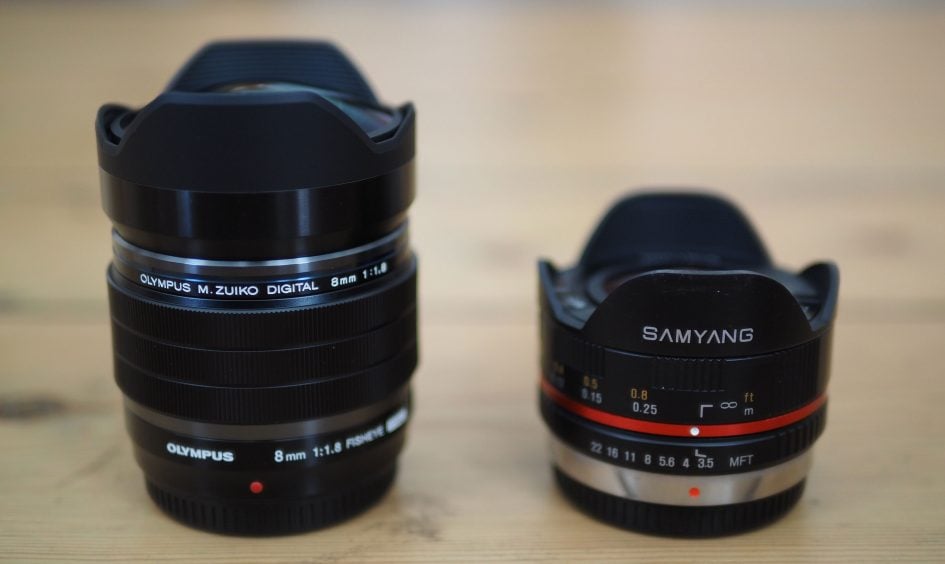
As you’d hope for a high-end lens, the Olympus 8mm f1.8 Fisheye feels the best in your hands compared to its rivals. The weatherproof construction is complemented by a silky smooth manual focusing ring that’s a World apart from the budget Samyang. It’s a shame the manual focusing ring can’t be pulled back to switch Olympus bodies direct into manual focus, but it’s not a big issue to select manual focus from the menus.
The AF speed isn’t the fastest around, but the lens generally snaps into focus in less than a second even when adjusting from the closest distance to infinity.
Like its rivals, the Olympus Fisheye is protected by a large lens cap that clips over the bulbous front end, gripping the built-in petal hood, and like the Panasonic and Samyang, there’s no filter thread.
Olympus 8mm f1.8 Fisheye optics
Most Fisheye lenses capture a 180 degree field of view with a significant degree of geometric distortion that can be used for creative effects. There are however two types of Fisheye lenses: ‘circular Fisheyes’ which deliver a circular image on the frame with 180 degree coverage in every direction, and those which crop the circle to fill the frame with 180 degree coverage on the diagonal only. Preferences vary but for me the latter ‘full-frame’ Fisheyes are more flexible, as having the full circle can be more than a little extreme.
All three of the Micro Four Thirds Fisheye lenses I’m comparing here are full-frame models which deliver approximately 180 degree coverage across the diagonal. As you might expect the Samyang fractionally shorter 7.5mm focal length does in fact allow it to capture a fractionally wider field of view than the Olympus 8mm as seen in their coverage comparisons below (Olympus on the left, Samyang on the right).
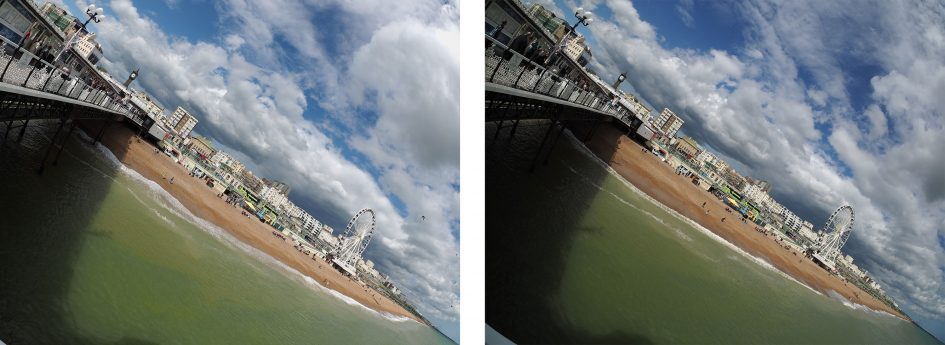
Above left: Olympus 8mm coverage, above right: Samyang 7.5mm coverage
As I mentioned earlier, Fisheye lenses introduce a great deal of geometric distortion which becomes particularly apparent when you angle them up or down even a little. However if you’re very careful and keep them perfectly level, it’s possible to have a straight horizon with minimal curvature. Here’s two examples taken from the same position, the version below left with the camera level and the horizon positioned in the middle of the frame level and the version below right angled up a little. The difference is significant, but also illustrates the flexibility of effects you can achieve with Fisheye lenses.
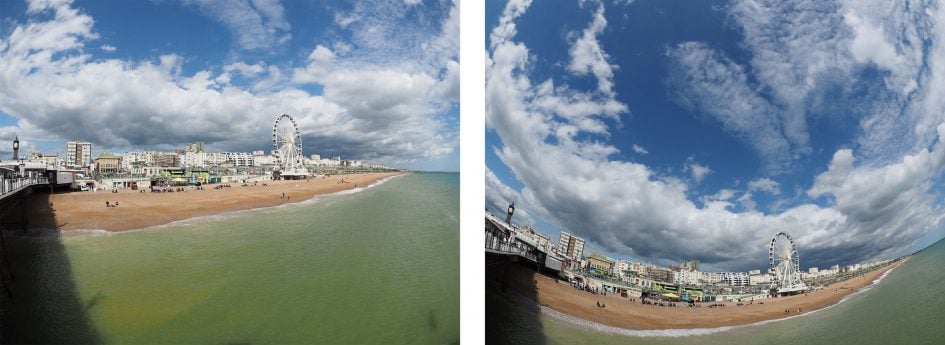
Above left: Fisheye lens held level, above right: Fisheye lens angled upwards
As you might expect for its f1.8 optical speed, the Olympus has the most complex optical design of the three fisheyes I’m comparing here with 17 elements in 15 groups, compared to 10 in 9 for the Lumix G and 9 in 7 for the Samyang. The closest focusing distance of 12cm is fractionally further than the 10cm of the Lumix or 9cm of the Samyang, but the fact is you’ll probably be so nervous about something touching the front element of any of them that you’ll rarely find yourself limited by any of them in this regard. What makes the Olympus more interesting for close-up work though is its brighter aperture that actually lets you achieve shallower depth of field effects than its rivals – a rarity in fisheye photography.

Above: 1/100, f1.8, 200 ISO, 8mm (180 degree diagonal)
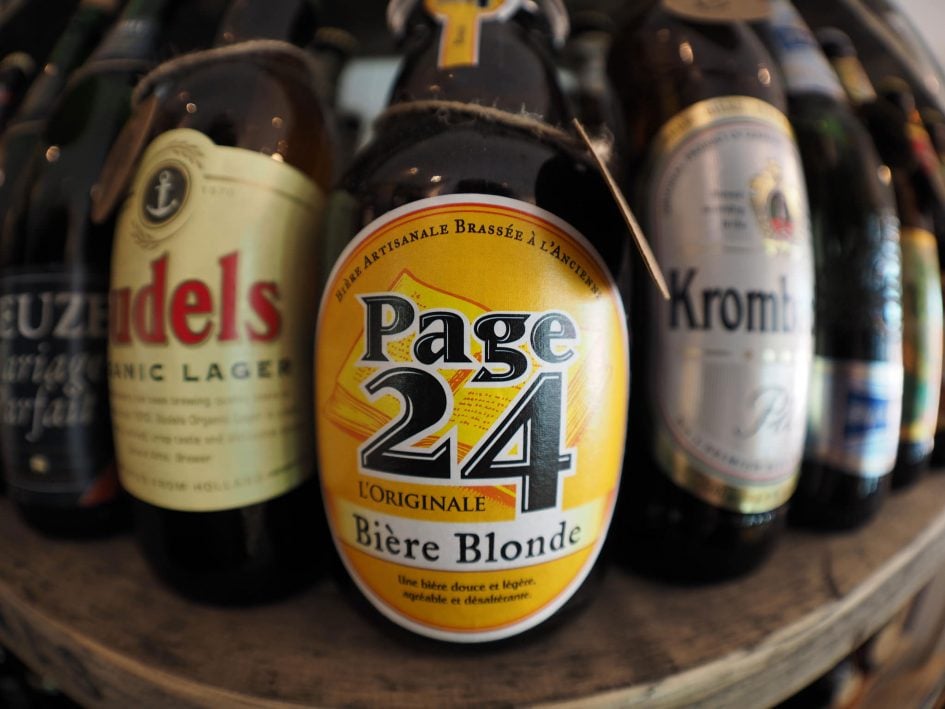
Above: 1/30, f1.8, 200 ISO, 8mm (180 degree diagonal)
The Olympus and Panasonic fishies share seven diaphragm blades, giving them more starburst spikes than the six blades of the Samyang when all are set to small apertures. Here’s how the Olympus looks at f1.8 (below left) and f22 (below right), although when the aperture is closed this small, you’ll need to keep the optics meticulously clean, as the merest dust speck can result in undesirable artefacts.
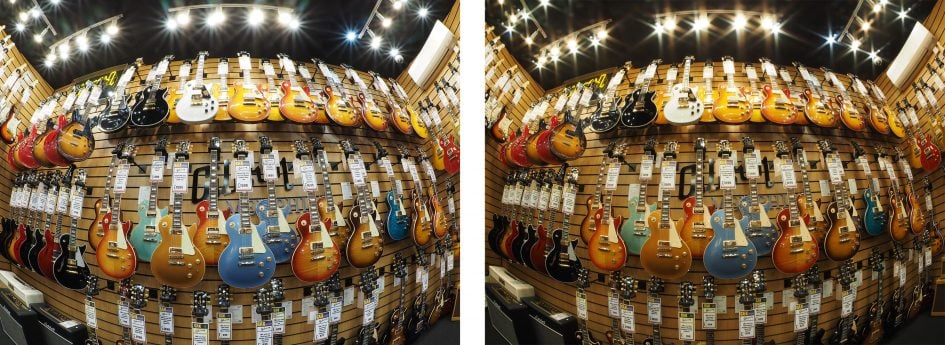
Above left: Olympus 8mm Fisheye at f22, above right: Samyang 7.5mm Fisheye at f22
Here’s another comparison, this time both from the Olympus, at f1.8 (below left) and f22 (below right), although when the aperture is closed this small, you’ll need to keep the optics meticulously clean, as the merest dust speck can result in undesirable artefacts.
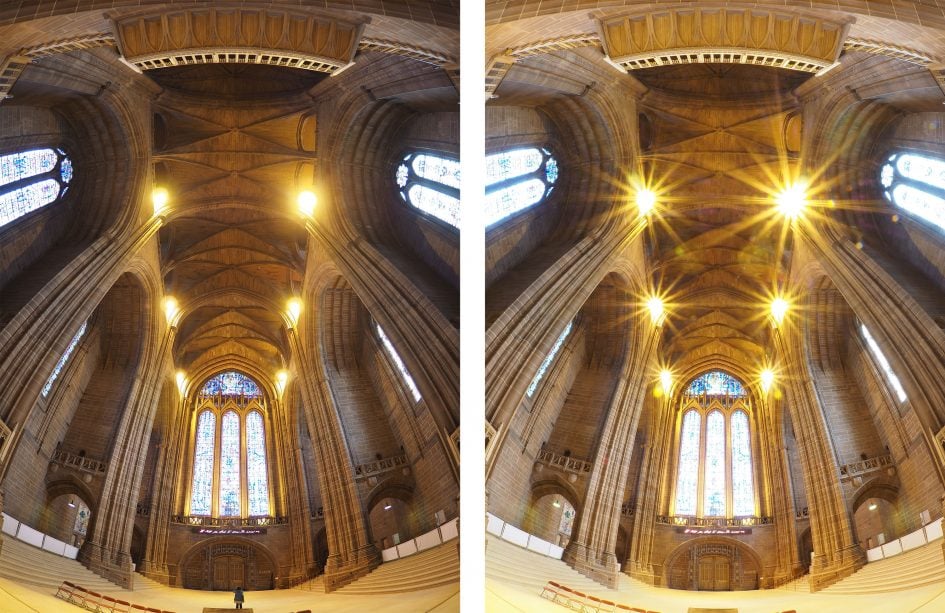
Above: Olympus 8mm Fisheye at f1.8 (left) and at f22 (right)
As I’ve mentioned throughout, one of the things which makes the Olympus Fisheye unique not just among Micro Four Thirds options but fisheyes from any system, is the bright f1.8 focal ratio. At the time of writing, this made it the World’s brightest fisheye, typically by at least one stop and in many cases two stops.
In terms of exposure this allows you to shoot in dimmer light conditions without having to slow down the shutter speed or increase the sensitivity by as much as other models. This makes it particularly useful for video, especially bike, skate and snow sports in low light. Here’s a video I filmed while walking along the murky Tar Tunnel near Ironbridge in Shropshire. The built-in stabilization of the Olympus bodies allows you to capture nice and smooth handheld footage.
Above: Download the original file (Registered members of Vimeo only). Here’s a handheld clip I filmed with the Olympus 8mm f1.8 Fisheye mounted on an OMD EM1 body. The tunnel was very dim, but thanks to the f1.8 aperture, I was able to shoot at a lower ISO than expected, and the stabilisation of the body allowed the footage to remain steady.
As you saw earlier, the f1.8 focal ratio also opens greater opportunities for shallow depth of field effects. Obviously with 180 degree fisheye coverage you’re not going to significantly blur the background, but at very close distances, some blurring is possible, and it’s certainly more than is possible with rival models.
Now it’s time to check out how the lens performs in terms of sharpness across the frame! Check out my Olympus 8mm f1.8 Fisheye quality results, or skip to my Olympus 8mm f1.8 Fisheye sample images or back to my verdict!
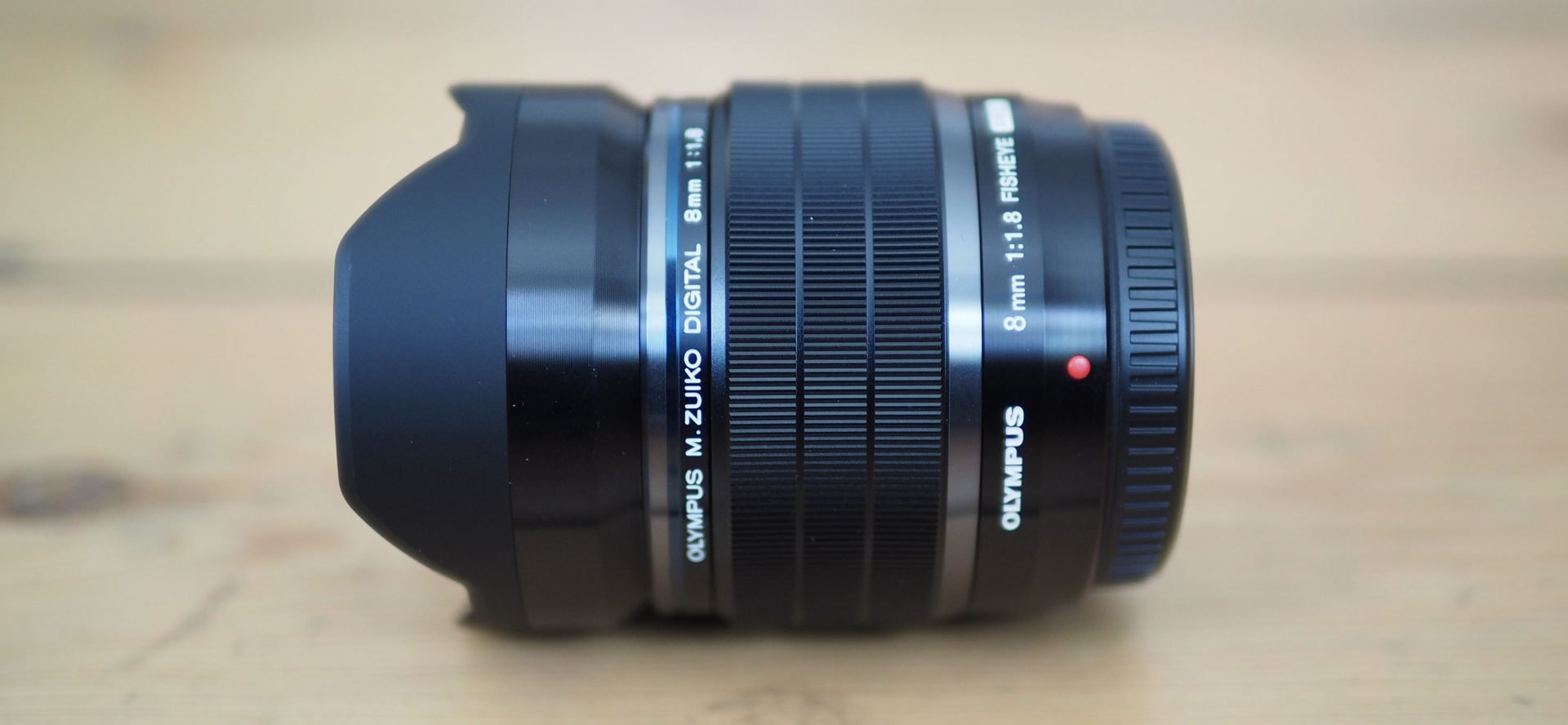
 The Olympus 8mm f1.8 Fisheye Pro is the first fisheye lens to sport an f1.8 focal ratio, allowing you to shoot in dimmer conditions without having to increase the sensitivity. Even wide-open at f1.8, the lens delivers very sharp details right into the corners, making it a great choice for interiors. It's also great for action and extreme sports, whether shooting stills or movies, especially with the dust and splash-proof construction. I'm often sceptical over the usefulness of fisheye lenses, but I find myself shooting with the 8mm f1.8 Fisheye much more than I expected thanks to its speed, quality and build - they make it much more flexible than the slower options. If you fancy a fisheye but have a tighter budget, consider the Samyang 8mm f3.5.
The Olympus 8mm f1.8 Fisheye Pro is the first fisheye lens to sport an f1.8 focal ratio, allowing you to shoot in dimmer conditions without having to increase the sensitivity. Even wide-open at f1.8, the lens delivers very sharp details right into the corners, making it a great choice for interiors. It's also great for action and extreme sports, whether shooting stills or movies, especially with the dust and splash-proof construction. I'm often sceptical over the usefulness of fisheye lenses, but I find myself shooting with the 8mm f1.8 Fisheye much more than I expected thanks to its speed, quality and build - they make it much more flexible than the slower options. If you fancy a fisheye but have a tighter budget, consider the Samyang 8mm f3.5.



